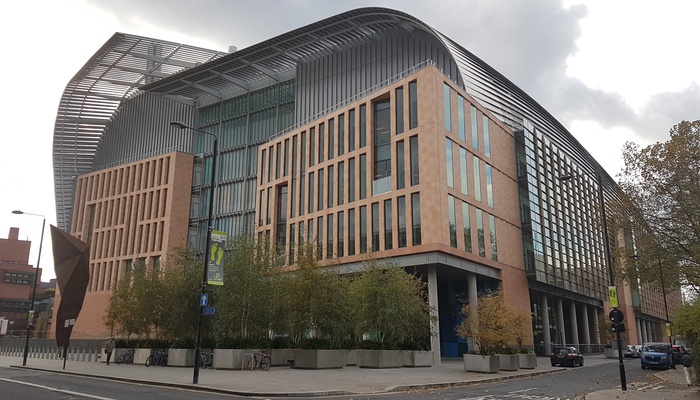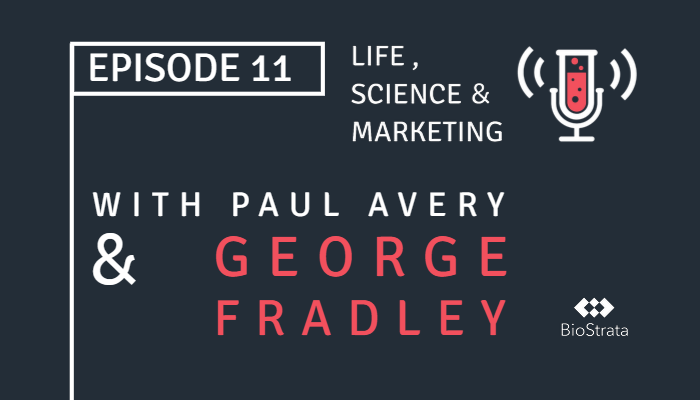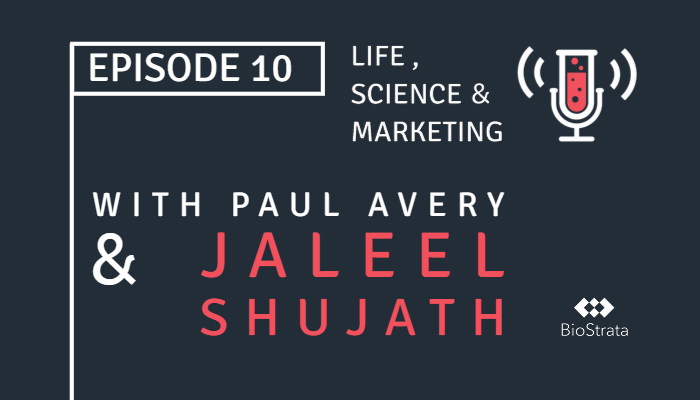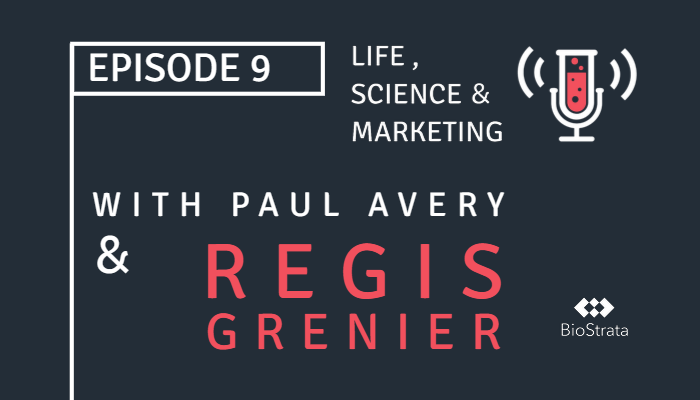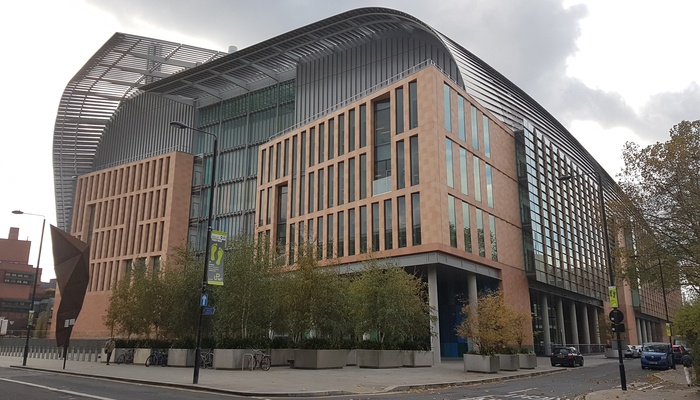
On 16th November, BioBeat held its fifth summit at the Francis Crick Institute in London. Following the success of the four previous summits, this year’s meeting focused on the theme ‘re-shaping biotech partnering'. Coming after the recent publication of its annual Movers and Shakers in BioBusiness report on 2nd November, BioBeat17 brought together scientists, entrepreneurs, and investors to explore strategies and opportunities for accelerating translation between academia and industry. Here's a brief round-up of some of our highlights from the event.
Introducing the BioBeat17 summit
BioBeat17 kicked off with an introduction from BioBeat’s founder, Miranda Weston-Smith. Addressing the 200-strong audience, Miranda noted: “It’s crucial now that we dig into our partnership imagination, to accelerate the cohesion of collaborations and shape how they can be practically achieved.”
Next up was a welcome address from Dr Véronique Birault, Head of Translation at the Crick and one of the 50 ‘Movers and Shakers’ celebrated in BioBeat’s 2017 report. Speaking about the Crick’s distinctive multidisciplinary approach to biomedical research, she highlighted its increasingly important role in translational science (incidentally, BioStrata were at the Crick on a separate visit back in May, and you can read here about the power of its pervasive collaborative culture).
Case study: How partnering enhances innovation and translation
Next up was Dr Lucy Collinson, Head of Electron Microscopy at the Crick, who presented an intriguing case study demonstrating how partnering can really enhance innovation. Dr Collinson spoke about her team’s efforts to use imaging technology to solve so-called ‘needle in a haystack’ problems, which seek to uncover rare disease-related molecular events in space and time, such as blood vessel fusions underlying the growth of a cancerous tumour.
The correlative imaging techniques that have been used in the past to solve these problems have unfortunately been unsuccessful. Dr Collinson believes that this is due in part to a lack of collaboration between the biotechs developing the technologies and the scientists who use the equipment. So supported by the Crick’s specialist scientific translation team, she set out to change the state of play.
Dr Collinson not only brought together a multidisciplinary team of biologists, physicists, and neuroscientists, but she also set up partnerships with small- to medium-sized biotech enterprises. These partnerships helped her team design and develop a novel integrated light and electron microscope. Using this new technology, researchers can now link the dynamic function of fluorescently-marked proteins with cell and tissue ultrastructure for the first time, helping to locate molecular events vital to disease pathways (and generating data that could lead to the development of new treatments). Dr Collinson's team is now taking things even further, looking to develop the technology's automation capabilities.
Catalysing partnerships: a role for life science marketing?
Dr Collinson's talk was followed by two panel discussions, each featuring interactive audience Q&As. First up was a session focused on supercharging growth in biotech by partnering with academic research institutes. The panel consisted of four esteemed women working at the forefront of biotech innovation: Dr Sarah Howell (CEO, Arecor), Dr Jane Dancer (CBO, F-Star), Dr Natalie Mount (CSO, GammaDelta Therapeutics) and Dr Lucinda Crabtree (Senior Investment Analyst, Woodford Investment Management).
Dr Howell opened the discussion, explaining how partnering with research institutes can increase opportunities for biotechs. “[Biotechs] are focused on delivering a specific set of goals in a short period of time, but don’t have the resources to work on the fundamental science. That’s where research institutes can help.”
Dr Crabtree added a financial perspective to the debate, saying that investors always want to be reassured that the technology or therapeutic is supported by the most informed, robust, and innovative research to avoid downstream ‘hiccups’. “That’s where collaborations with research institutes can prove exceptionally helpful in obtaining funding support from investors" she explained.
Lastly, Dr Dancer expressed her surprise that her biotech company, F-Star, wasn’t yet tapping into the scientific creativity of the Crick, speculating that perhaps they didn’t know about all the amazing science that’s happening there. “That raises the question, how do you get your science out there, so we can identify promising opportunities for translation?” she asked. One possibility could be to promote academic science and innovation through a life science marketing and communications approach (using the strategies and tactics our team commonly uses to promote company breakthroughs and developments).
How can boosting career opportunities benefit partnering?
The second panel discussion focused on 'careers permeability' between academia and biotechs, and how this can boost partnering and translation. The panel comprised four women with an impressive array of academic and industry experience: Professor Angela Russell (Associate Professor of Medicinal Chemistry, University of Oxford and Co-founder, OxStem), Dr Barbara Domayne-Hayman (CBO, Autifony Therapeutics and Chair, Puridify), Dr Julie Simmonds (Director, Equity Research, Panmure Gordon) and Dr Andrea Spezzi (CMO and Co-founder, Orchard Therapeutics).
Professor Russell drew on her own experiences to talk about the importance of careers permeability in partnering. A successful academic, Professor Russell has embedded OxStem within her research department at Oxford University, to develop and commercialise small molecule therapeutics for degenerative diseases and diseases associated with ageing.
“I believe that permeability in careers is not about leaving one role to go to another. I have to simultaneously balance my academic responsibilities with the research strategies within OxStem,” she explained. “I couldn’t have done it without the early support I received from expert partners familiar with the commercial side of the biotech sector".
How can we enhance life science business models?
Professor Russell described how integrating OxStem and its associated funding into her academic department has enabled both the company and the research to flourish. By adopting this model, she explained, companies can benefit from being embedded in a university’s research environment, while still retaining a sharp commercial focus.
Professor Russell remarked that universities and research institutes are becoming ever more supportive of this type of model, because a key aim of the UK’s Research Excellence Framework for 2020 is to maximize the impact of research outside of academia. As such, we could see this being increasingly adopted in the future to benefit life science business and research.
Dr Simmonds spoke about how to ensure the financial success of new life science businesses. “When academics set up a new life science company, often the financial strategy is the least well-characterised. But when professional management get involved, the original scientific vision can go off in a different direction” she said. “So to preserve the science, there needs to be more permeability and understanding of the financial pathway at an earlier stage".
BioBeat17 was an unmissable event this year. A diverse range of expert insights from academics, entrepreneurs and investors demonstrated how applying new strategies can drive growth in the life sciences, and continue the rapid rate of innovation within the sector. As Miranda said in her welcome speech, “It’s in our hands to make real differences”, and it looks like we’re already making great progress!
What changes and new strategies have you got planned for next year? Contact us to discuss how life science marketing can support your growth in 2018.
